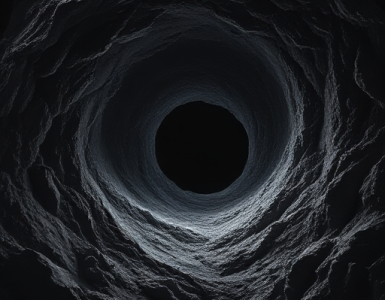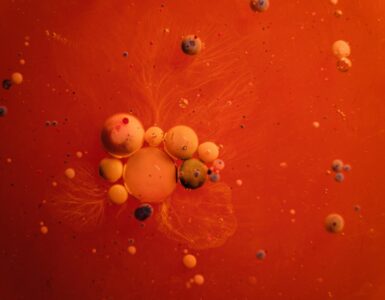Science and technology. They’re supposed to be serious, right? Filled with complex equations, dry lab reports, and the hushed tones of experts. But scratch beneath the surface, and you’ll find a universe of bizarre facts, unexpected discoveries, and genuinely mind-bending stuff that’ll make you question everything you thought you knew. Prepare for a delightful dive into the weird and wonderful world of sci-tech! Sci-Tech Sidetracks: Unexpected Discoveries That'll Blow Your Mind
The Unexpectedly Sticky Situation of Gecko Feet
Ever wondered how geckos can effortlessly scale walls? It’s not magic, it’s nanoscale physics! Millions of microscopic hairs on their feet, called setae, interact with surfaces through van der Waals forces – incredibly weak attractions between molecules. Individually, these forces are insignificant, but collectively, they’re strong enough to support the gecko’s weight. Think of it like millions of tiny suction cups, only way cooler and way more efficient. This incredible adhesion is so refined that scientists are trying to replicate it for use in climbing robots and advanced adhesives.
The Self-Healing Powers of Some Materials
Forget Wolverine; certain materials boast their own impressive self-healing abilities. Scientists have developed polymers that can mend cracks and breaks on their own, like a biological organism. These materials, often inspired by nature’s self-repair mechanisms (think of your own skin!), contain microcapsules filled with healing agents. When a crack appears, the capsules burst releasing the agent, which seals the gap. Imagine self-repairing car bumpers or even self-healing buildings – it’s less sci-fi than you think.
The Enigma of Dark Matter and Dark Energy
We can only see about 5% of the universe. The rest? It’s a mysterious mix of dark matter and dark energy. Dark matter, invisible and unobservable, makes up about 27% of the universe and seems to exert gravitational pull on visible matter. Dark energy, even more elusive, makes up roughly 68% and is thought to be responsible for the accelerating expansion of the universe. It’s like there’s a giant, invisible cosmic elephant in the room, and we’re still trying to figure out what it is and how it works. It’s a bit humbling to realize how little we actually understand about our universe.
The Spooky World of Quantum Entanglement
Prepare for some mind-bending physics. Quantum entanglement is a phenomenon where two or more particles become linked together in such a way that they share the same fate, no matter how far apart they are. This means that if you measure the properties of one entangled particle, you instantly know the properties of the other, even if they’re light-years apart. This seemingly instantaneous connection has baffled scientists for decades, challenging our understanding of space, time, and causality. It’s like having two coins that always land on the same side, no matter where they are.
The Unexpected Beauty of Fractals
Fractals are mathematical sets that exhibit self-similarity at different scales. Essentially, they’re patterns within patterns within patterns. Think of a fern leaf: each smaller branch looks like a miniature version of the entire leaf. Fractals appear everywhere in nature, from snowflakes to coastlines to the branching of trees. Their intricate beauty is not only aesthetically stunning but also reveals fundamental principles of how complex systems are structured.
The Unexpected Uses of Slime Molds
Slime molds might sound disgusting, but they’re surprisingly sophisticated organisms. These single-celled creatures can solve complex problems, like finding the most efficient path through a maze, demonstrating surprising intelligence for something without a brain. Scientists are studying slime molds to better understand how to optimize networks and solve logistical challenges.
The Amazing Potential of 3D-Printed Organs
3D printing is no longer just for toys and trinkets. Researchers are making incredible strides in bioprinting, creating functional tissues and even organs from living cells. Imagine a future where organ transplants are readily available, eliminating the need for donor waiting lists. While still in its early stages, the potential to revolutionize medicine is immense. ¿Qué son los ordenadores cuánticos?
The Rise of Artificial Intelligence and Machine Learning
AI and machine learning are transforming numerous aspects of our lives, from self-driving cars to personalized medicine. While AI’s potential benefits are huge, it also raises ethical questions about job displacement, bias in algorithms, and the potential for misuse. The coming decades will be crucial in shaping the responsible development and deployment of this powerful technology.
The Power of CRISPR Gene Editing
CRISPR-Cas9 technology is a revolutionary gene-editing tool that allows scientists to precisely modify DNA sequences. This opens up incredible possibilities for treating genetic diseases, developing new therapies, and even improving crop yields. However, the ethical implications of altering the human genome are profound, requiring careful consideration and open public dialogue. It’s a powerful tool that demands responsible use.
Los misterios de las profundidades oceánicas
Despite decades of exploration, the ocean’s depths remain largely unexplored. We know more about the surface of Mars than we do about the bottom of our own oceans. The ocean holds a wealth of undiscovered species, geological formations, and potentially crucial resources. Exploring these depths promises to reveal untold wonders.
This fascinating journey through the unexpected sides of science and technology only scratches the surface. The world is full of wonders and surprises, constantly pushing the boundaries of human knowledge and ingenuity. Stay curious, keep exploring, and prepare to be amazed by what the future holds!

























Añadir un comentario